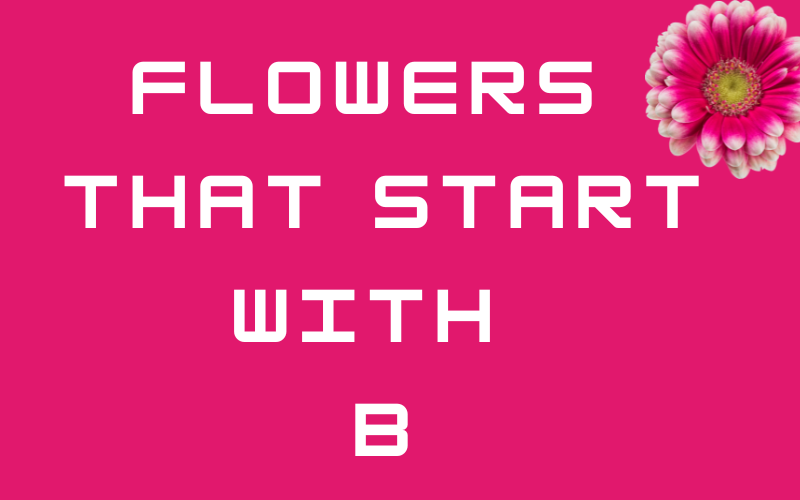There are many beautiful flowers name starting with B. One of the most popular is the Bluebell, which is native to Europe and blooms in the spring. It is known for its delicate blue petals and sweet fragrance.
Another popular flower is the Begonia, which comes in a wide variety of colors and can bloom all year round in the right conditions. The Bird of Paradise is also a stunning flower that starts with B, with its bright orange and blue petals that resemble a tropical bird. The Black-eyed Susan is a popular wildflower that is native to North America and has bright yellow petals with a dark center.
Finally, the Baby’s Breath is a classic filler flower that is often used in bouquets and arrangements with its delicate white blooms. These are just a few examples of the many beautiful flowers that start with the letter B.
Flowers Name Starting with B
Baby Blue Eyes
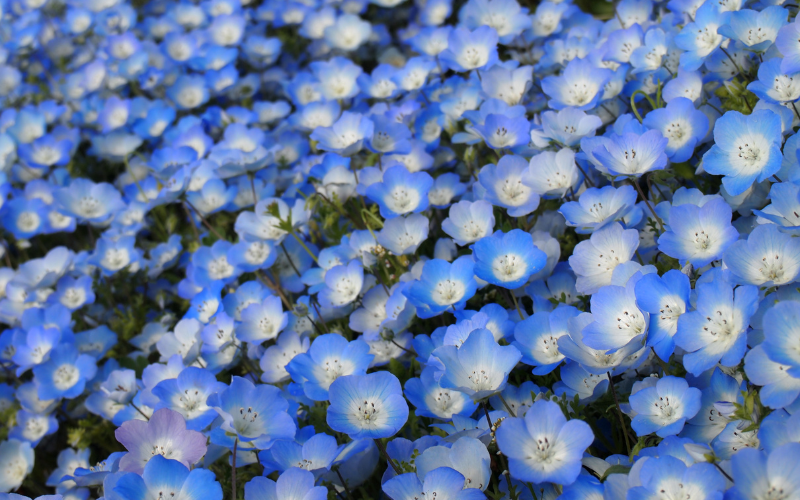
The Baby Blue Eyes flower is a delicate and beautiful wildflower. The Baby Blue Eyes flower, scientifically known as Nemophila menziesii. The Baby Blue Eyes flower is an annual plant that typically blooms in the spring and summer months.
This flower is popular among gardeners due to its vibrant color and easy-to-grow nature. This plant is also used in traditional medicine due to its anti-inflammatory and analgesic properties. The Baby Blue Eyes flower is not just a beautiful sight to behold, but it is also an important part of our ecosystem and a valuable resource for us all.
| Scientific Name | Nemophila menziesiiscie |
| Native Range | Wyoming, Oregon, California, Nevada, and northwestern Mexico |
| Flowering Season | Late winter to early summer |
Balsam

Balsam flowers are beautiful and unique flowers. That is native to tropical regions of Asia and Africa. These flowers come in a range of colors including pink, red, orange, yellow, and white.
Balsam flowers are popular for their bright and showy blooms, but they are also known for their medicinal properties. With their bright colors and unique seed pods, balsam flowers are a beautiful addition to any garden or floral arrangement.
| Scientific Name | Impatiens balsamina |
| Native Range | India and Sri Lanka |
| Flowering Season | Late spring until the first frost |
Basket
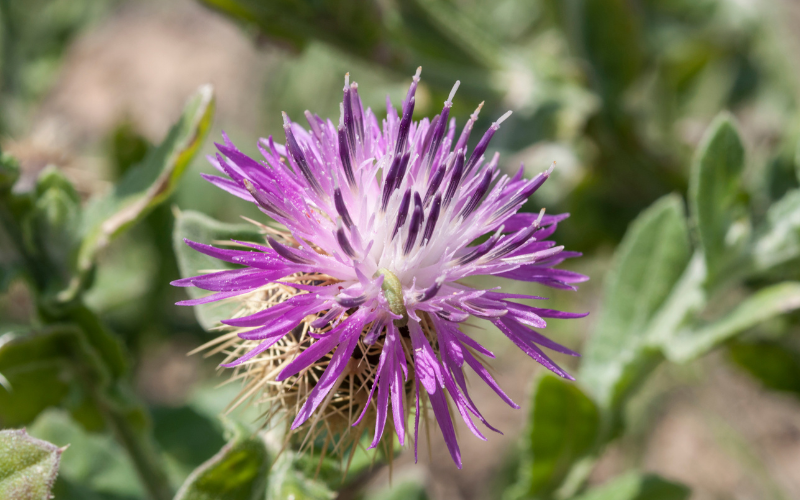
The basket flower is a beautiful and unique flower. That is native to North America. Its scientific name is Plectocephalus americanus (aka Centaurea americana).
They bloom in early to mid-summer and can grow up to 2-3 feet tall. The flower is not only attractive to humans but also to bees and butterflies. Basket flowers are often used in wildflower gardens. They are also used in traditional medicine to treat ailments such as fever, cough, and digestive problems.
| Scientific Name | Plectocephalus americanus (aka Centaurea americana) |
| Native Range | Arizona, Arkansas, Kansas, Louisiana, Missouri, Oklahoma, and Texas, in addition to northwestern, northeastern, and southwestern Mexico |
| Flowering Season | Late spring to early summer |
Begonia
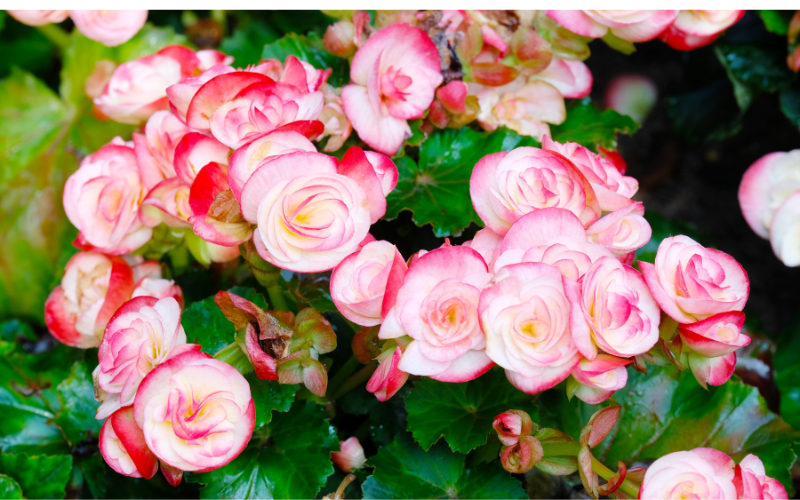
The begonia flower is a beautiful and unique plant that has captured the hearts of gardeners all around the world. They are available in a variety of colors, ranging from pink and red to yellow and orange.
Begonias are also relatively easy to care for, making them a great option for both novice and experienced gardeners. With regular watering and well-drained soil, the begonia flower can thrive indoors or outdoors, adding beauty and color to any space.
| Scientific Name | Begonia |
| Native Range | The moist, tropical, and subtropical climates around the world |
| Flowering Season | Varies by species: generally, early summer until the first frost |
Bitterroot
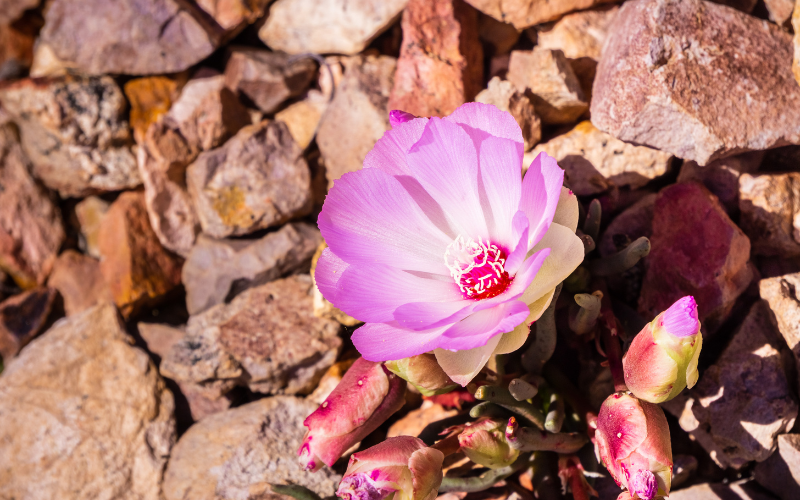
The Bitterroot flower is a beautiful flower. That is native to western North America, particularly Montana. It is scientifically known as Lewisia rediviva . It is also the state flower of Montana. The Bitterroot flower is a small, delicate, pinkish-purple flower that blooms in the spring and early summer.
It is known for its pleasant fragrance and is often used in perfumes and soaps. The Bitterroot flower is not only a beautiful addition to any garden but is also a symbol of resilience and adaptability as it can withstand harsh conditions in the wild.
| Scientific Name | Lewisia rediviva |
| Native Range | Alberta, British Columbia, Arizona, California, Colorado, Idaho, Montana, Nevada, Oregon, Utah, Washington, and Wyoming |
| Flowering Season | May and June |
Black Hollyhock
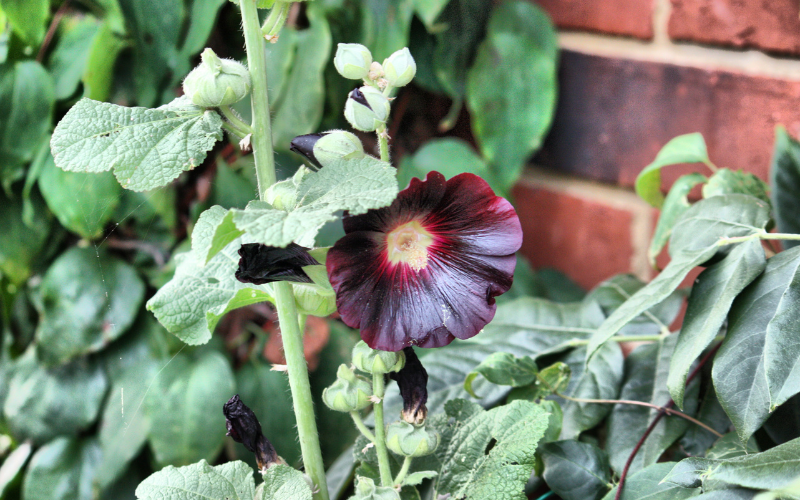
The Black Hollyhock flower is a unique and stunning flower. It blooms in the summer. The Black Hollyhock can grow up to 10 feet tall and is a perfect choice for adding height to a garden or border.
Due to its height, the Black Hollyhock is also beneficial for attracting bees, and butterflies to the garden. These flowers are also used in various herbal medicines due to their anti-inflammatory and antioxidant properties. The Black Hollyhock is a low-maintenance plant that can thrive in full sun or partial shade.
| Scientific Name | Alcea rosea |
| Native Range | Turkey |
| Flowering Season | Late spring to late summer |
Bleeding Heart
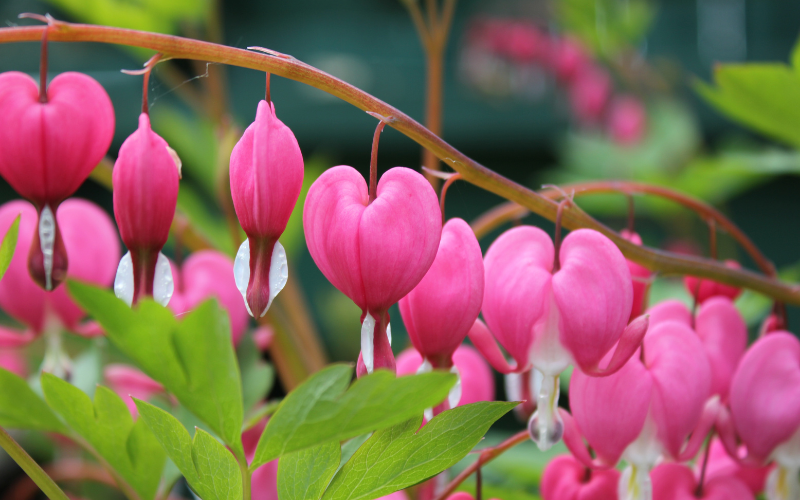
The Bleeding Heart flower is a stunning plant. This flower is known for its unique shape, which looks similar to a heart with a droplet hanging from the bottom, that is why it has such a romantic and charming name.
The Bleeding Heart flower is a perennial plant that blooms from late spring to mid-summer. The flowers come in shades of pink and white, and they are known to attract butterflies to your garden. One of the most interesting things about the Bleeding Heart flower is that it has a rich cultural and symbolic history.
| Scientific Name | Lamprocapnos spectabilis (aka Dicentra spectabilis) |
| Native Range | Korea and Manchuria |
| Flowering Season | Mid-spring to early summer |
Blue Columbine
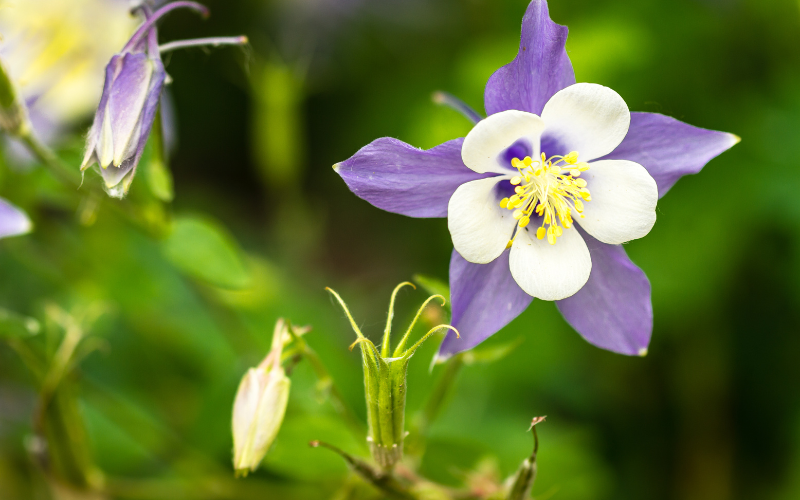
Blue Columbine flowers are beautiful. This lovely perennial blooms in late spring and early summer with delicate blue and white petals. The Blue Columbine, also known by its scientific name, Aquilegia caerulea, is native to North America’s Rocky Mountains.
This flower can be found in the wild blooming in shaded, and is known to attract bees. The Blue Columbine is a low-maintenance plant that may thrive in a variety of soil types and situations with proper care.
| Scientific Name | Aquilegia coerulea |
| Native Range | Arizona, Colorado, Idaho, Montana, Nevada, New Mexico, Utah, and Wyoming |
| Flowering Season | Ate spring to early summer |
Blue Lupine
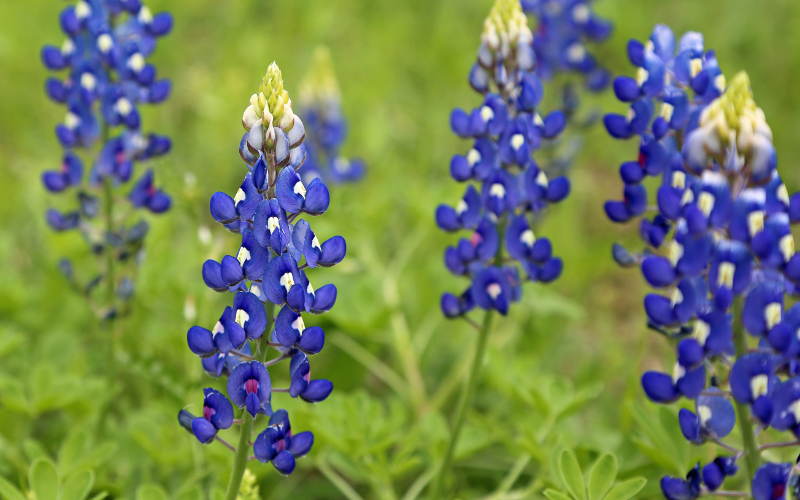
The Blue Lupine flower is a stunning and unique flower. These flowers are known for their beautiful blue or purple color, which is often accented by white or yellow markings.
The Blue Lupine is native to North America. In addition to its beauty and ecological importance, Blue Lupine has also been used for medicinal purposes. With its striking appearance and many uses, it’s no wonder the Blue Lupine has become a beloved flower of many.
| Scientific Name | Lupinus polyphyllus |
| Native Range | Alberta, British Columbia, Ontario, and Québec, in Canada, in addition to California, Connecticut, Idaho, Maine, Massachusetts, Minnesota, Montana, Nevada, New York, Oregon, Vermont, Washington, and Wisconsin in the United States |
| Flowering Season | Late spring through early summer |
Blue crown Passionflower
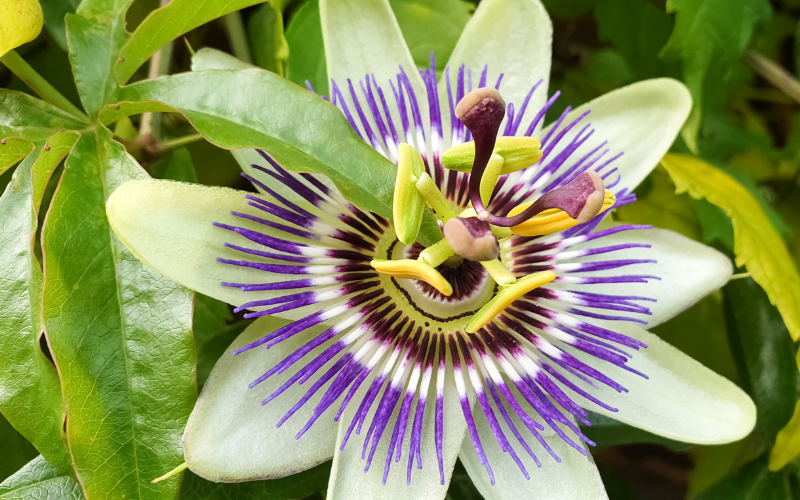
The Bluecrown Passionflower is a beautiful and unique plant. The plant is native to South America but can now be found in many different parts of the world. The Bluecrown Passionflower is also a popular plant for gardeners because of its unique appearance and ease of care.
The plant can grow up to 15 feet in length and produces beautiful flowers throughout the year. For those who enjoy beautiful, unique, and beneficial plants, the Bluecrown Passionflower is definitely worth considering for your home or garden.
| Scientific Name | Passiflora caerulea |
| Native Range | South America |
| Flowering Season | late spring to early fall |
Blue Mistflower
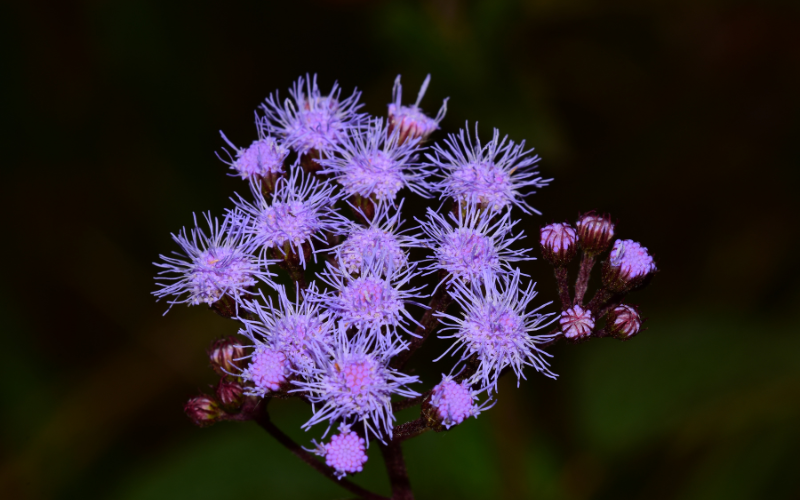
Blue Mistflower is a beautiful flower. The Blue Mistflower, scientifically known as Conoclinium coelestinum. It is native to North America. Blue Mistflower is an annual plant that typically grows to a height of 2 to 3 feet (60 to 90 cm).
Blue Mistflower blooms from late summer to fall, usually from August to October. During this time, it produces beautiful blue or purple flowers that attract butterflies, bees, and other pollinators. It is a low-maintenance plant, requiring minimal care and attention
| Scientific Name | Conoclinium coelestinum |
| Native Range | The eastern United States and Ontario |
| Flowering Season | Late summer until the first frost |
Blue Sage
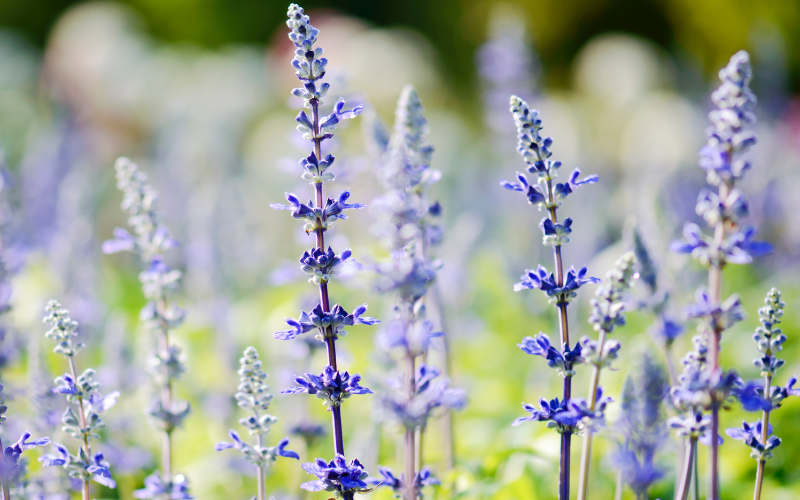
Blue Sage is a beautiful flower. it is native to North America, blue sage is a perennial herb that belongs to the mint family. Its flowers bloom from late summer to early fall, creating a stunning display of blue hues that will surely catch the eye of any passerby.
The flowers attract pollinators such as bees and butterflies, making it an excellent choice for eco-friendly gardeners. Blue Sage has been utilized for its medicinal properties. It is used for its beauty, fragrance, or potential health benefits.
| Scientific Name | Salvia azurea |
| Native Range | Alabama, Arizona, Arkansas, Colorado, Florida, Georgia, Illinois, Kansas, Kentucky, Louisiana, Mississippi, Missouri, Nebraska, New Mexico, Oklahoma, South Carolina, Tennessee, and Texas |
| Flowering Season | Midsummer to fall |
Borage
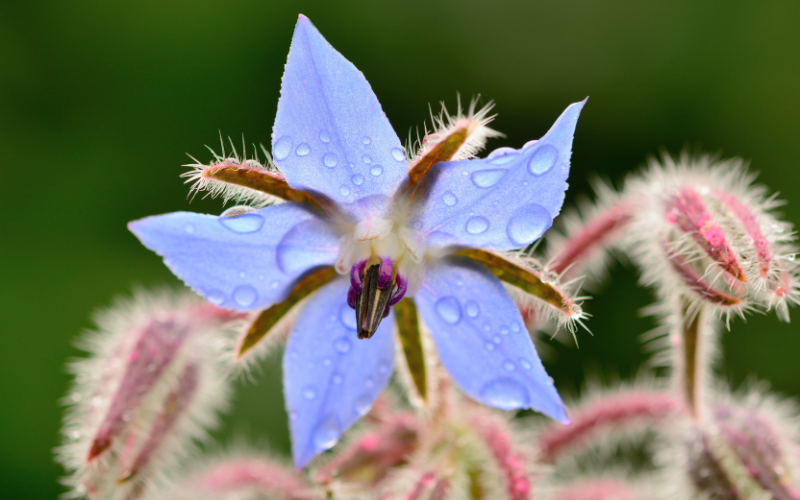
Borage is a beautiful flower. Borage, scientifically known as Borago officinalis. It is native to the Mediterranean region but is now widely grown in various parts of the world. Borage plants typically reach a height of 2 to 3 feet (60 to 90 cm).
Borage has a relatively long blooming period, typically from late spring to early fall, depending on the climate. Borage flowers are known for their attractiveness to bees and butterflies. Borage is an able-to-survive plant that is relatively easy to grow. It prefers full sun but can tolerate partial shade.
| Scientific Name | Borago officinalis |
| Native Range | The Mediterranean region |
| Flowering Season | Early summer to fall |
Bottlebrush
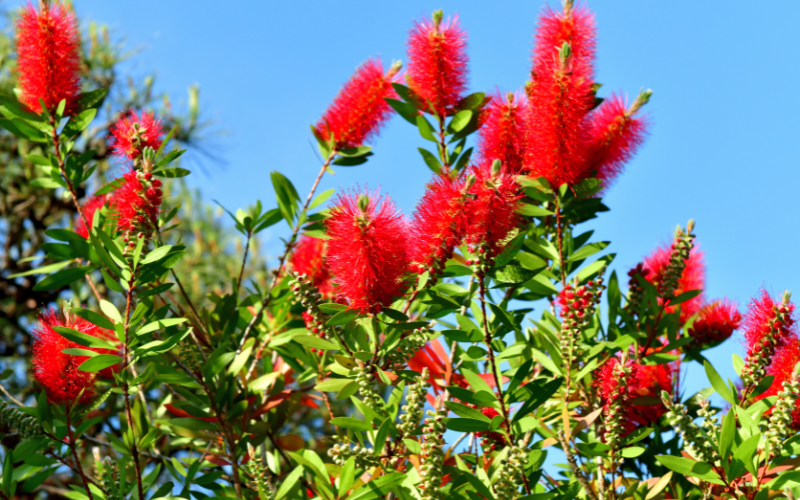
The bottlebrush flower is a beautiful and eye-catching plant. It is native to Australia, this flower is a member of the Myrtaceae family. The name “bottlebrush” comes from the resemblance of its flower spikes to the bristles of a brush used to clean bottles.
The flower is typically red, although there are varieties that produce flowers in shades of pink, yellow, or white. The bottlebrush flower is a favorite among bees and butterflies. Bottlebrush plants usually bloom in spring or early summer, but some species may produce flowers at other times of the year.
| Scientific Name | Callistemon |
| Native Range | Australia |
| Flowering Season | Spring through fall |
Bright Eyes
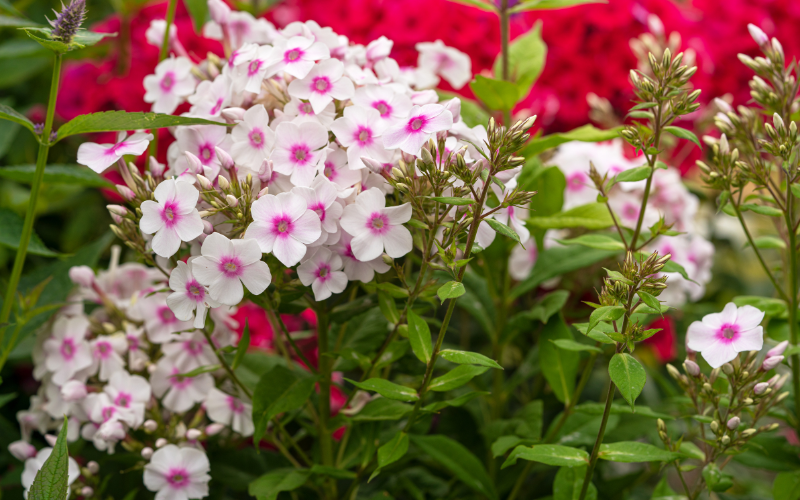
Bright Eye is a beautiful flower. The Bright Eyes flower, also known as Coreopsis tinctoria. Its name perfectly encapsulates its unique and eye-catching appearance. The plant itself is relatively easy to care for, requiring minimal maintenance and thriving in full sun to partial shade.
Not only is it visually stunning, but it also attracts butterflies and bees, making it an eco-friendly choice for the garden. Its long-lasting blooms make it a popular choice for cut flower arrangements
| Scientific Name | Phlox paniculata ‘Bright Eyes’ |
| Native Range | The eastern United States, Utah, and Washington |
| Flowering Season | Mid to late summer |
Brittlebush
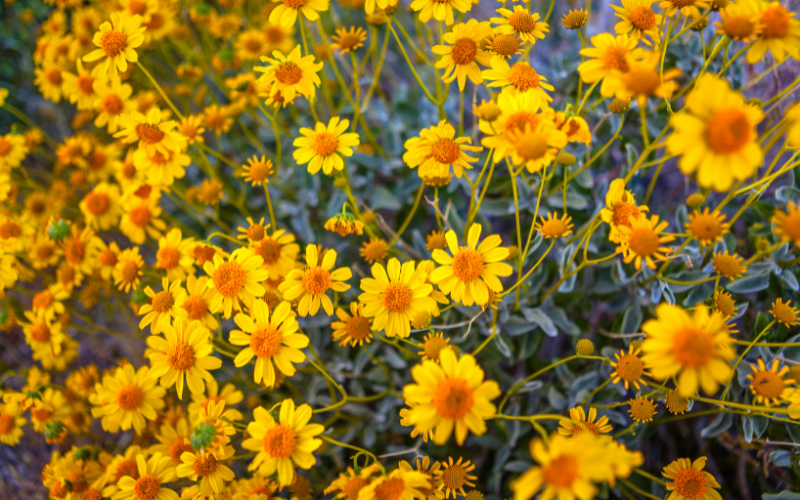
Brittlebush is abeauti ful flower . The Brittlebush flower, scientifically known as Encelia farinosa. Its unique name comes from the brittle nature of its woody stems. Brittlebush is a small to medium-sized plant that typically grows up to 3 to 6 feet (1 to 2 meters) in height.
Brittlebush blooms in late winter to spring, typically from February to May, depending on the region and local climate. Brittlebush is a relatively low-maintenance plant. The flowers attract bees and butterflies.
| Scientific Name | Encelia farinosa |
| Native Range | Northern Mexico and the southwestern United States |
| Flowering Season | Late winter to mid-spring |
Bromeliad
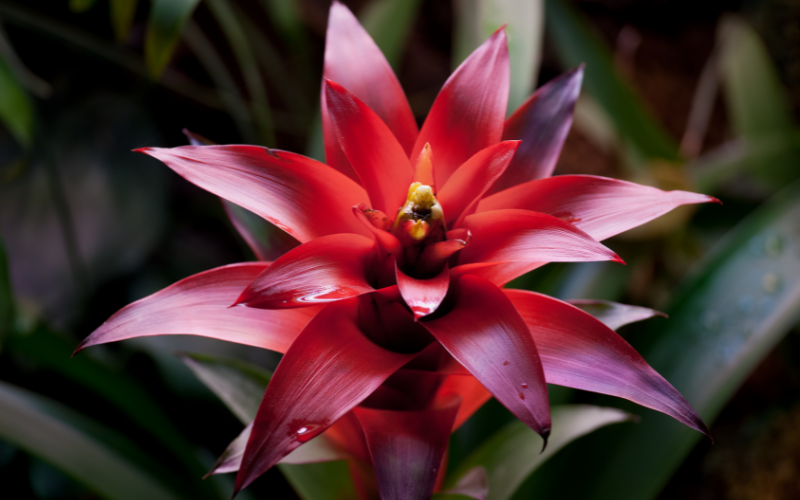
Bromeliad is a beautiful flower. Bromeliad flowers come in a wide range of shapes, sizes, and colors, depending on the species. They can be tubular, bell-shaped, or star-shaped, and often have vibrant hues such as red, orange, pink, yellow, or purple.
The blooming season for bromeliad flowers can vary depending on the species and growing conditions. Bromeliads are popular as ornamental plants and can be grown both indoors and outdoors, depending on the species and climate. They have unique growth habits.
| Scientific Name | Bromeliaceae |
| Native Range | Americas and one species native to western Africa |
| Flowering Season | Year-round but only bloom once |
Buttercup
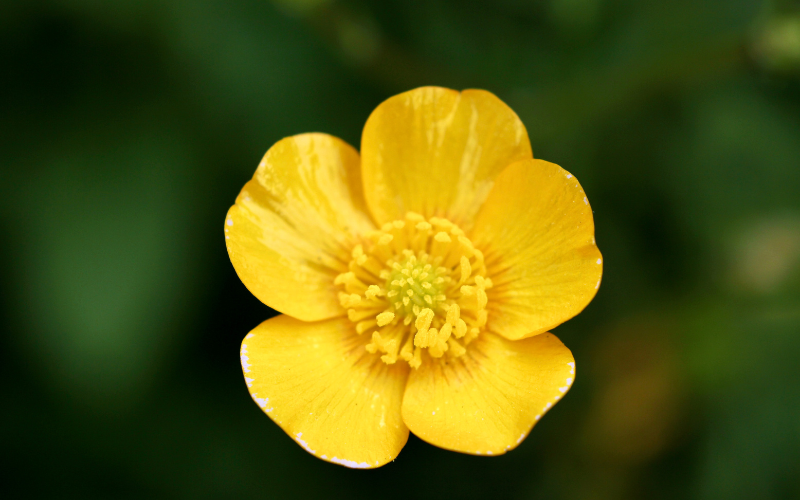
Buttercup is a beautiful flower. Buttercup flowers typically have bright and cheerful yellow petals, although some species may also have white, pink, or red petals. Buttercup flowers bloom in the spring and summer months, depending on the specific species and location.
Buttercups are versatile plants that can be grown in a variety of conditions, although specific care requirements may vary depending on the species. They generally prefer full sun to partial shade and well-draining soil.
| Scientific Name | Ranunculus bulbosus |
| Native Range | Europe, the Middle East, and parts of northern Africa |
| Flowering Season | Late winter or early spring through summer |
Buttonbush
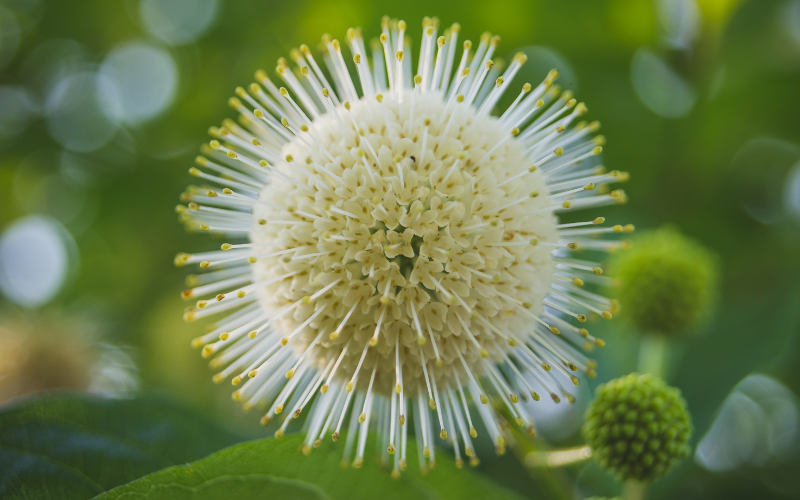
The Buttonbush is a beautiful flower. Buttonbush, scientifically known as Cephalanthus occidentalis, is a deciduous shrub native to North America. Buttonbush blooms from late spring to mid-summer, typically from June to August.
The flowers often attract a variety of butterflies and bees. Buttonbush is a medium to large plant that can grow up to 6 to 12 feet (1.8 to 3.7 meters) in height. The Buttonbush flower also plays a vital ecological role, providing nectar.
| Scientific Name | Cephalanthus occidentalis |
| Native Range | Eastern and southern North America |
| Flowering Season | Spring and Summer |
Butterfly Weed

Butterfly Weed is a beautiful flower. Butterfly Weed, scientifically known as Asclepias tuberosa. It is native to North America. It is a member of the milkweed family (Asclepiadaceae). The flowers are typically small, measuring about 1 to 2 inches (2.5 to 5 cm) in diameter.
Butterfly Weed blooms from late spring to early fall, typically from June to August. Butterfly Weed is relatively easy to grow and is well-suited. It prefers full sun and well-drained soil.
| Scientific Name | Asclepias tuberosa |
| Native Range | Eastern and Southern North America |
| Flowering Season | Late spring to late summer |
Blanket Flower
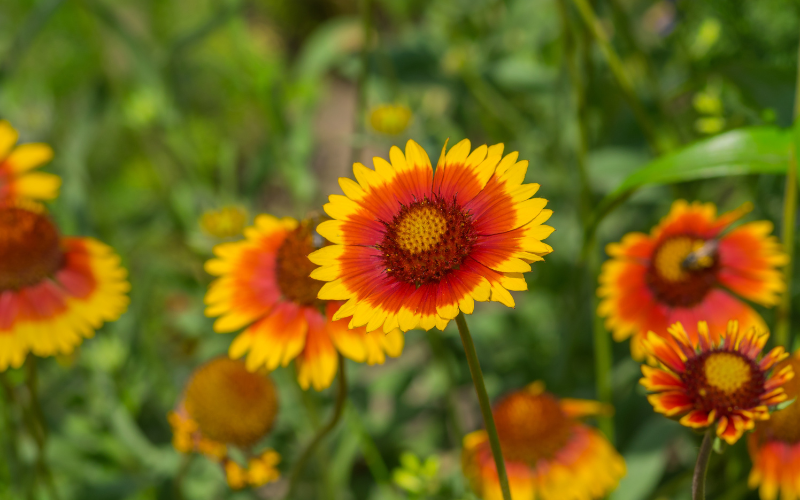
The Blanket Flower, or Gaillardia, is a beautiful part of the Asteraceae family. Native to North and South America this comes in a range of shades, including red, yellow, and orange. Blooms from early summer to late fall thrive in well-drained soil, prefer full sun, and can grow to be 3 ft. tall.
The lovely, daisy-like blooms of the Blanket Flower have big center discs and ray-like petals. The petals have a sharp edge, that adds to visual appeal and attracts pollinators like bees and butterflies, making them a great addition to any flower bed.
| Scientific Name | Gaillardia |
| Native Range | Most of North America and Southeastern South America |
| Flowering Season | Summer |
Burning Bush
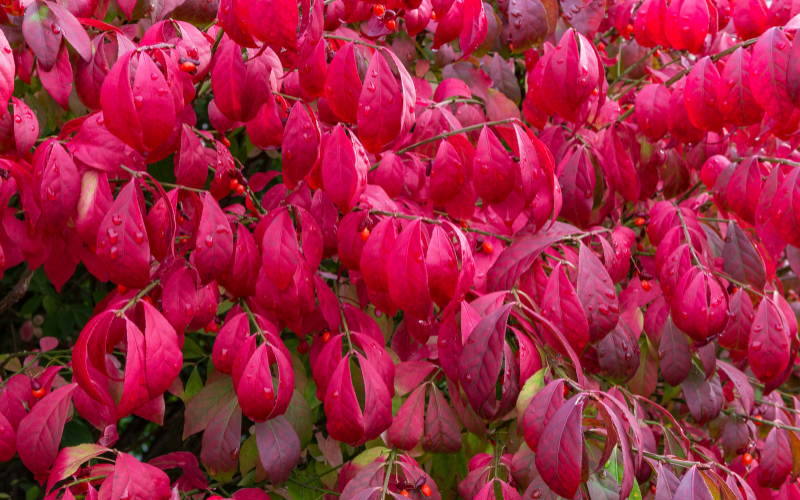
The Burning Bush, or Euonymus alatus is an amazing plant that gives beauty to any spot. Native to East Asia, its leaves turn a vivid red color in the autumn. Blooming in late spring or early summer, it thrives in well-drained soil and can reach a height of 15 feet.
Its limbs are covered with corky lines, giving it a rich look. The Burning Bush is popular in any scenery, providing all-year visual appeal and a touch of charm with its bright red foliage, gorgeous fruits, and severe branches.
| Scientific Name | Euonymus alatus |
| Native Range | Central and Northeastern Asia |
| Flowering Season | Late spring |
Barberton Daisy
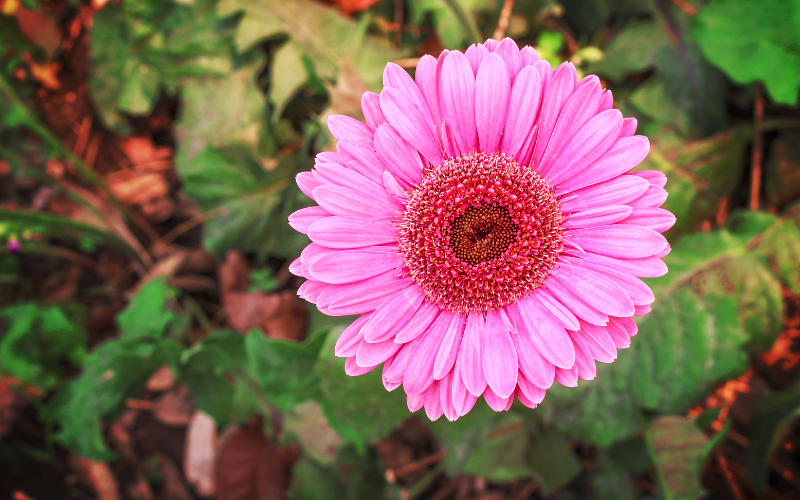
Barberton Daisy, or Gerbera jamesonii, is a beautiful flower of the Asteraceae family. Native to South Africa these grow in red, pink, orange, yellow, and white. Blooming from spring to early autumn, they thrive in well-drained, organic-rich soil and may get up to 18 inches tall.
Barberton Daisy has a big flower head with many layers of petals around the center. The petals are smooth and velvety and add to the charm of the flower. It has long, thin stems and glossy greenery that pairs well with the colorful blossoms.
| Scientific Name | Gerbera jamesonii |
| Native Range | Swaziland and the Northern Provinces of South Africa |
| Flowering Season | Late spring through fall |
Blackthorn
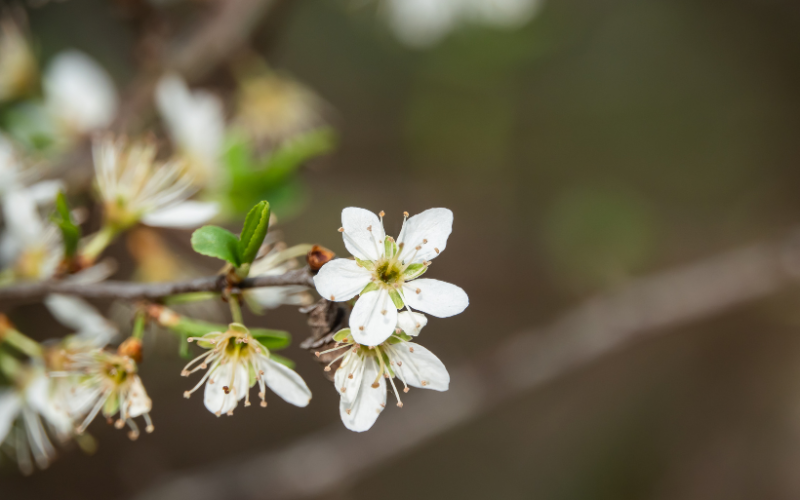
Blackthorn, or Prunus spinosa is a unique member of the Rosaceae family. Its dark green leaves with sharp edges are native to Europe, Western Asia, and North Africa, giving a striking contrast to the tiny white blooms.
Blooming in early spring & prefer well-drained soil, growing up to 20 ft. tall. The Blackthorn leaves are tiny, oval-shaped, and serrated. The flowers give way to small bluish-black fruits that ripen in the autumn. These fruits not only look good, but they also attract a variety of birds and fauna.
| Scientific Name | Prunus spinosa |
| Native Range | Western Asia, Europe, and Northern Africa |
| Flowering Season | Spring |
Blue Clematis
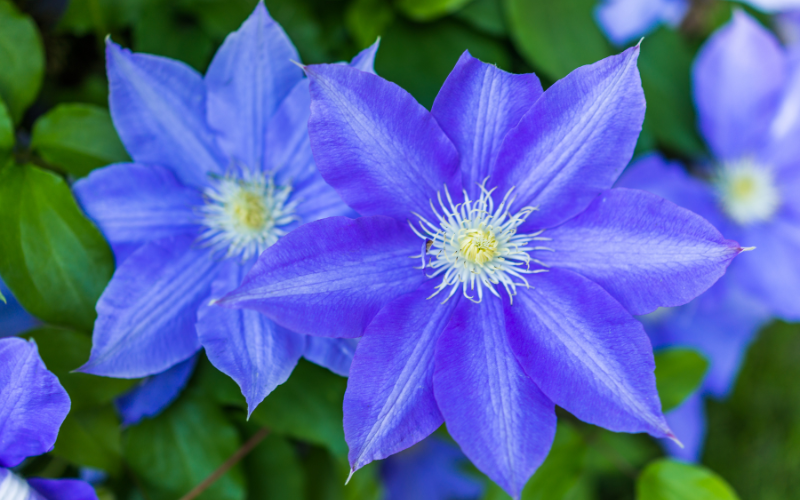
The Blue Clematis, or Clematis viticella, is a beautiful flower of the Ranunculaceae family. Native to Europe and Asia these come in various colors such as deep purple, violet, and blue.
Blooms in late spring to early summer, thrive in well-drained, fertile soil, and can reach a height of 10 feet. The Blue Clematis is a much-loved addition to any garden or landscape with its exquisite, star-shaped flowers and climbing nature.
| Scientific Name | Clematis |
| Native Range | Native to most countries and regions of the world |
| Flowering Season | Late spring to early summer or early spring and early fall, depending on the species |
Butterfly Bush
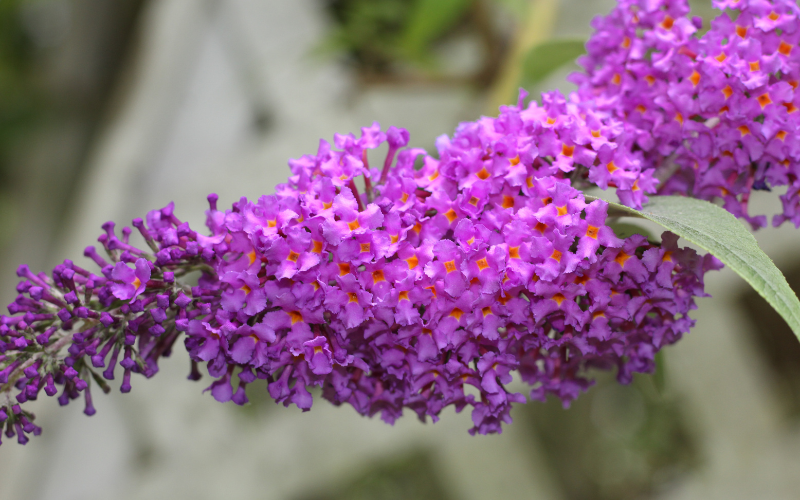
The Butterfly Bush, or Buddleja, is a bright flower in the Scrophulariaceae family. Native to Asia and Africa these occur in purple, pink, white, and even yellow. Blooms from summer to early autumn thrive in well-drained soil, prefer full sun, and can grow to be 12 ft. tall.
Butterfly Bush is known for luring butterflies with its fragrant and nectar-rich flowers, and it stands out by its long, thin leaves & curving branches, which give it an attractive and graceful look.
| Scientific Name | Buddleja |
| Native Range | Africa, Asia, and the Americas |
| Flowering Season | Midsummer to early fall |
Bachelor’s Button
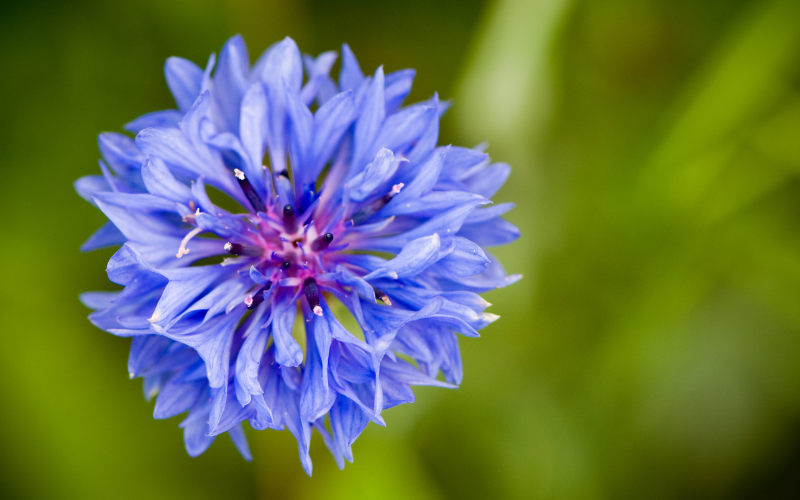
Bachelor’s Button, or Centaurea cyanus, is a lovely Asteraceae family flower. Native to Europe these come in blue, pink, white, and purple. Blooms from late spring to early summer thrive in well-drained soil and can reach a height of 3 feet.
The Bachelor’s Button, with its delicate and gorgeous petals, is certainly a sight to behold, attracting not only humans but also butterflies and bees, making it a great addition to any garden.
| Scientific Name | Centaurea cyanus |
| Native Range | Albania, Bulgaria, East Aegean Islands, Greece, Italy, Lebanon, Romania, Sicilia, Syria, Turkey, and Yugoslavia |
| Flowering Season | Late spring to early summer |
Bouvardia
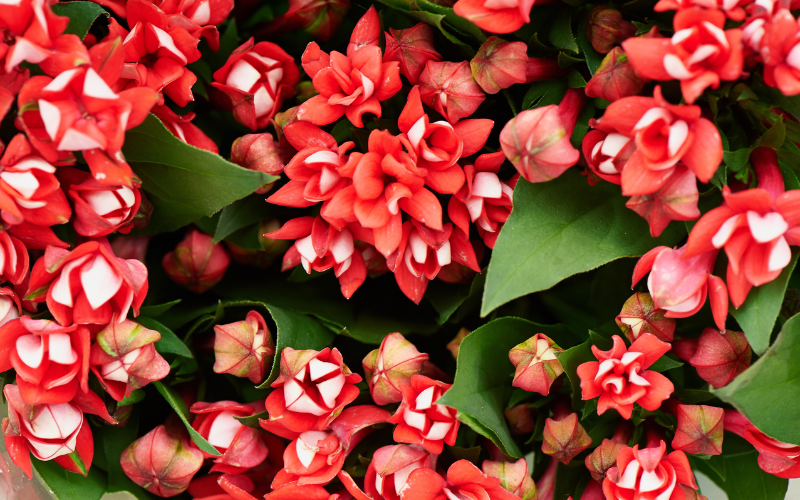
Bouvardia is an adorable flower in the Rubiaceae family. These are native to Mexico and Central America and come in a range of colors such as white, pink, red, and yellow. Blooms in the summer and fall thrives in well-drained soil, and can grow up to 3 feet tall.
It attracts butterflies and hummingbirds due to its gorgeous clusters of tubular blooms and glossy green foliage, and its delicate and fragrant flowers. Bouvardias is a beautiful flower that is beloved by pollinators and florists.
| Scientific Name | Bouvardia |
| Native Range | Arizona, New Mexico, Texas, Mexico, and Central America |
| Flowering Season | Spring to fall |
Blue Flax
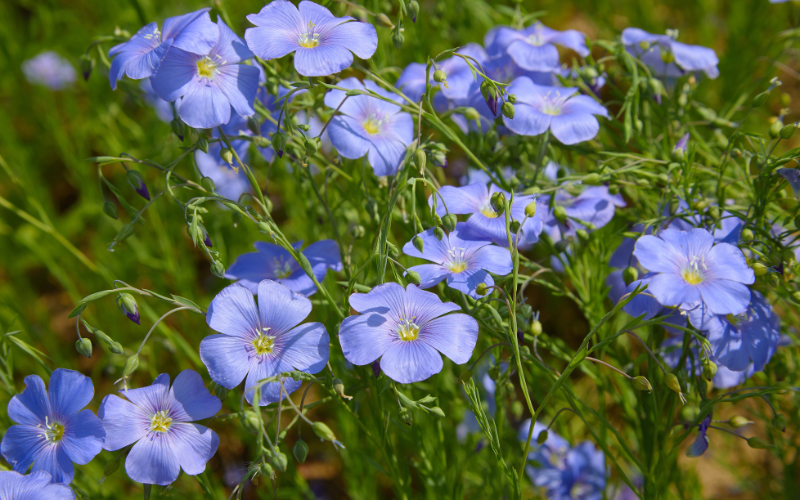
Blue flax, or Linum lewisii, is part of the Linaceae family. It is a North American native known for its stunning blue flowers that bloom from late spring to early summer. This prefers well-drained soil and can grow to be 2 ft. tall.
Blue flax has thin, wiry stems with narrow, lance-shaped leaves. These leaves are alternately set along the stem in a lovely and delicate pattern. Blue flax has bright blue petals and is cup-shaped, has five petals, and adds a touch of charm and beauty.
| Scientific Name | Linum lewisii |
| Native Range | West and central North America from Nunavut, Canada in the north to northern Mexico in the south |
| Flowering Season | Late spring to midsummer |
Black-Eyed Susan
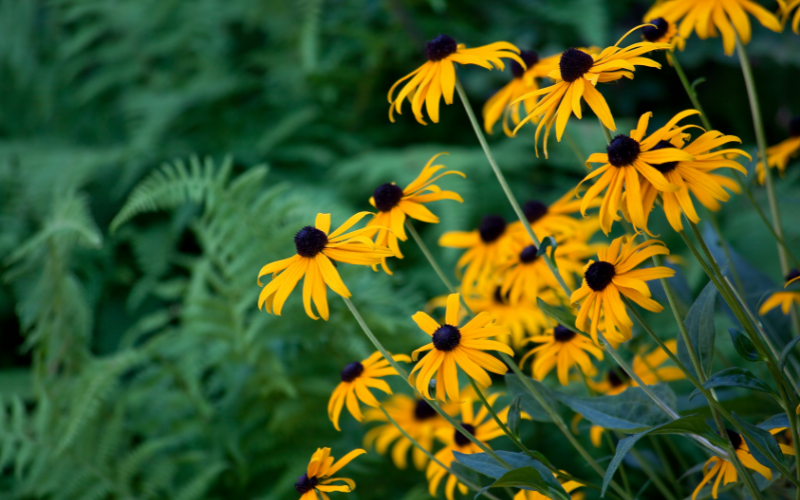
The Black-Eyed Susan is a stunning and vibrant flower that is native to North America. It is also known as Rudbeckia hirta. It is a member of the sunflower family (Asteraceae) and is known for its bright yellow or orange daisy-like flowers with dark brown or black centers.
The Black-Eyed Susan typically grows up to 2 to 3 feet (60 to 90 centimeters) tall and has coarse, hairy leaves. Black-eyed Susans are summer-blooming flowers. These flowers are relatively easy to grow and are adaptable to a wide range of conditions.
| Scientific Name | Rudbeckia hirta |
| Native Range | Southern Canada and most of the United States (except Arizona, Montana, and Nevada) |
| Flowering Season | June to August |
Bladderwort
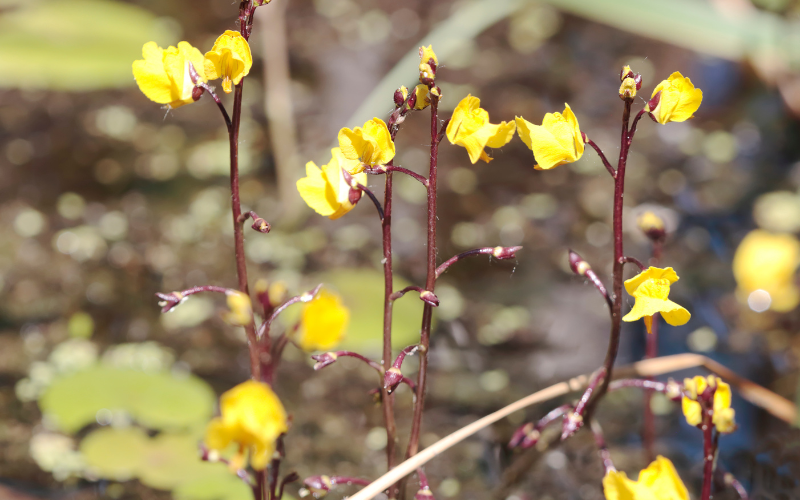
The bladderwort is a stunning and fascinating flower. It is native to North America, Europe, Asia, and Australia.
It is also known as Utricularia. The flowers come in shades of yellow, purple, lavender, or white. Bladderwort species can bloom throughout the year.
| Scientific Name | Utricularia |
| Native Range | North America, Europe, Asia, and Australia |
| Flowering Season | Throughout the year |
Blue Grama
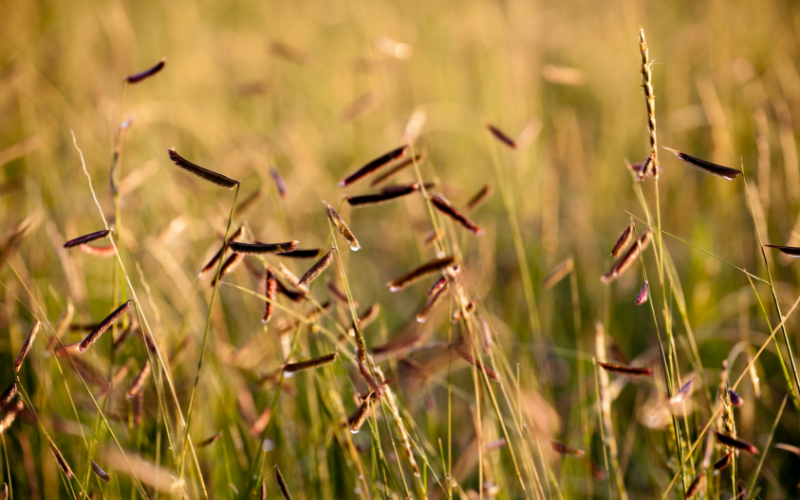
Blue Grama is a is a stunning wildflower. It is scientifically known as Bouteloua gracilis. It is native to North America. Blue Grama grass is adapted to a wide range of habitats.
It is a warm-season grass, which means it actively grows during the warm months of spring and summer.
| Scientific Name | Bouteloua gracilis |
| Native Range | North America |
| Flowering Season | Summer |
Bird’s Foot Trefoil
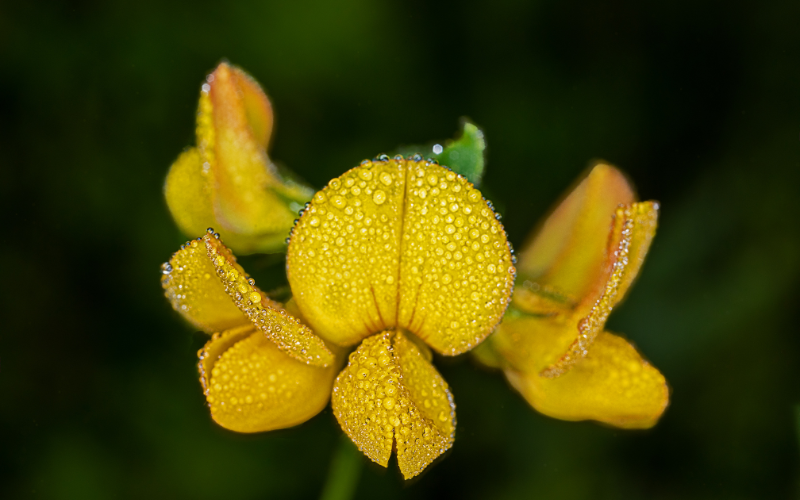
The bird’s Foot Trefoil is a charming flower. It is scientifically known as Lotus corniculatus. It is native to Europe and Asia. The flowers of Bird’s Foot Trefoil are typically bright yellow, resembling tiny golden pea blossoms.
The flower is relatively small, typically less than half an inch (about 1 cm) in diameter. It typically blooms from late spring to early summer.
| Scientific Name | Lotus corniculatus |
| Native Range | North Africa |
| Flowering Season | Late Spring to Early Summer |
Bird of Paradise
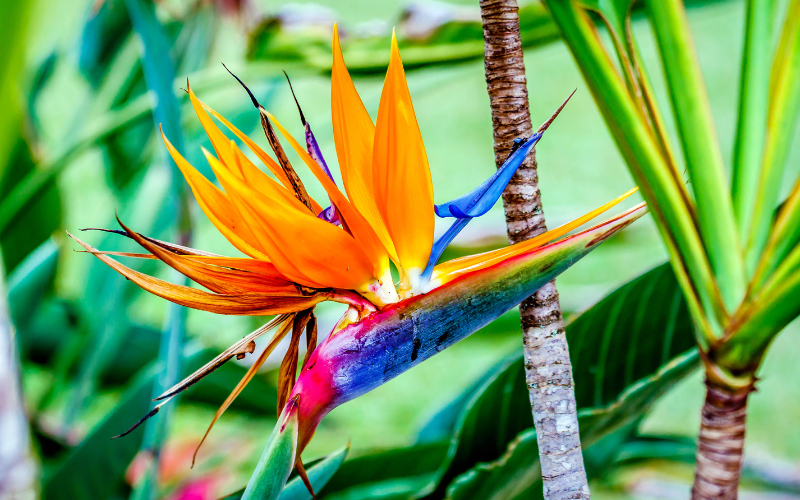
The Bird of Paradise is a unique flower. It is scientifically known as Strelitzia reginae. It is native to South Africa. The flowers can be quite large, with the entire inflorescence measuring up to 18 inches (45 cm) long.
It comes in a range of colors orange, blue, and purple. The Bird of Paradise can produce flowers throughout the year. Bird of Paradise prefers bright, indirect light when grown indoors and can tolerate direct sunlight when planted outdoors.
| Scientific Name | Strelitzia |
| Native Range | South Africa |
| Flowering Season | Throughout the year |
Bluebell
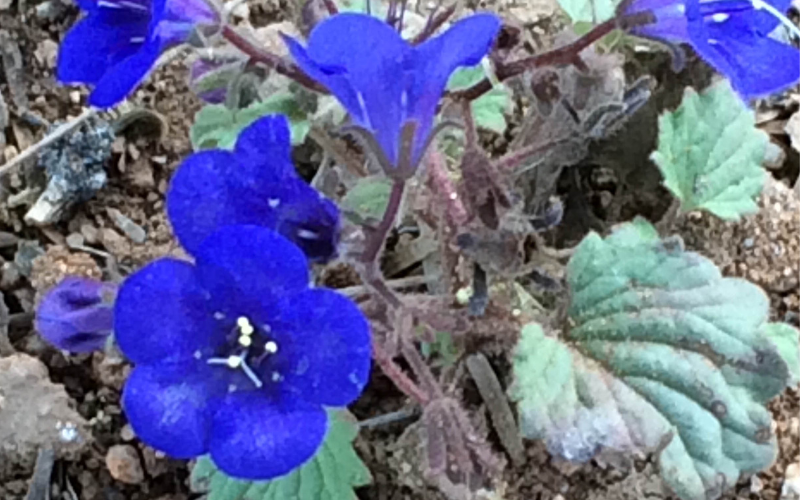
The enchanting bluebell is a mesmerizing flower. It is scientifically known as Hyacinthoides non-scripta. It is native to Europe, including the United Kingdom. The flower is relatively small, typically measuring about 1 inch (2.5 cm) in length.
They typically bloom in late spring to early summer. They are known for their unique bell-shaped blooms, which hang gracefully from slender stalks.
| Scientific Name | Hyacinthoides non-scripta |
| Native Range | Europe |
| Flowering Season | Spring |
Bush Violet
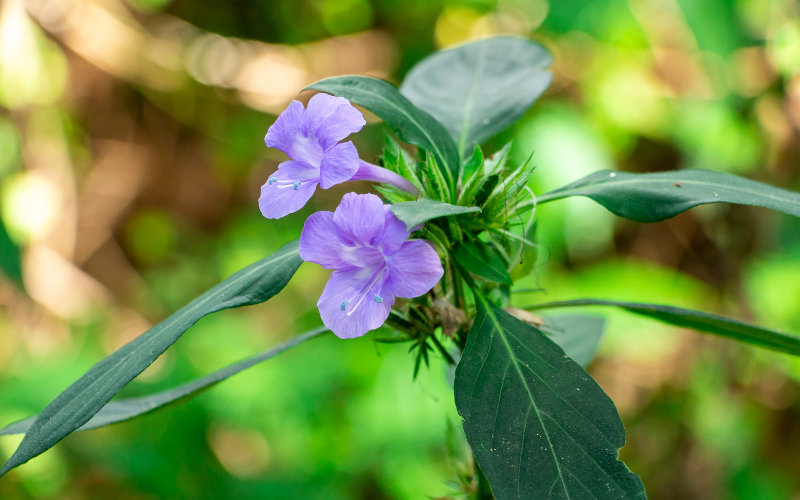
Bush Violet is a lovely flowering plant. It is scientifically known as Barleria obtusa. It is native to South Africa. The flower is relatively small, measuring about 1 inch (2.5 cm) in length.
It prefers full sun to partial shade, making it suitable for a variety of garden settings. Bush Violet appreciates regular watering, especially during dry periods, but it can tolerate some drought once established.
| Scientific Name | Browallia americana |
| Native Range | South America |
| Flowering Season | Summer |
Buttonbush

The buttonbush is a beautiful flower. It is native to North America. The flowers of Buttonbush are typically creamy white or pale pink, and they have a delightful fragrance.
Each flower is relatively small, with a diameter of about 0.2 inches (0.5 cm). The Buttonbush flower blooms from late spring to early fall.
| Scientific Name | Cephalanthus occidentalis |
| Native Range | Southern North America |
| Flowering Season | Late Spring to Early Fall |
Butterwort
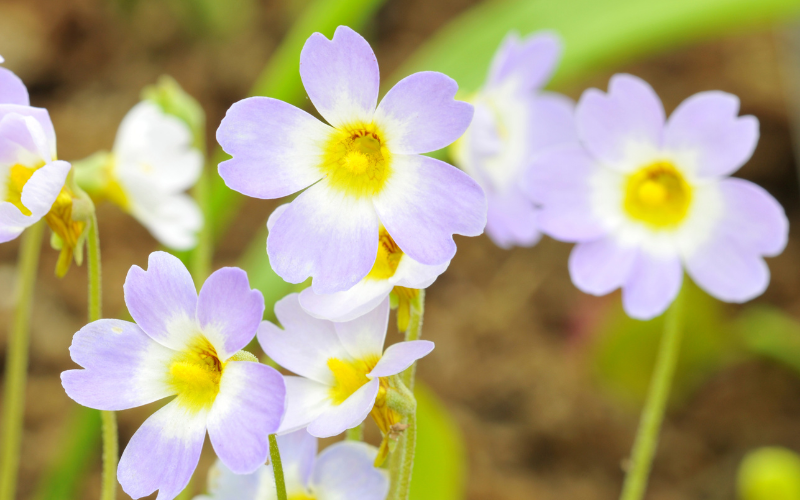
The Butterwort is a fascinating and unique flower. It is scientifically known as the Pinguicula. It is native to wetlands and damp areas.
Butterwort flowers are relatively small, with a diameter ranging from less than half an inch (about 1 cm) to a little over an inch (about 2.5 cm). It comes in shades ranging from pale pink to vibrant purple.
| Scientific Name | Pinguicula |
| Native Range | North and South America, Europe, and Asia |
| Flowering Season | Summer |
Brown-Eyed Susan
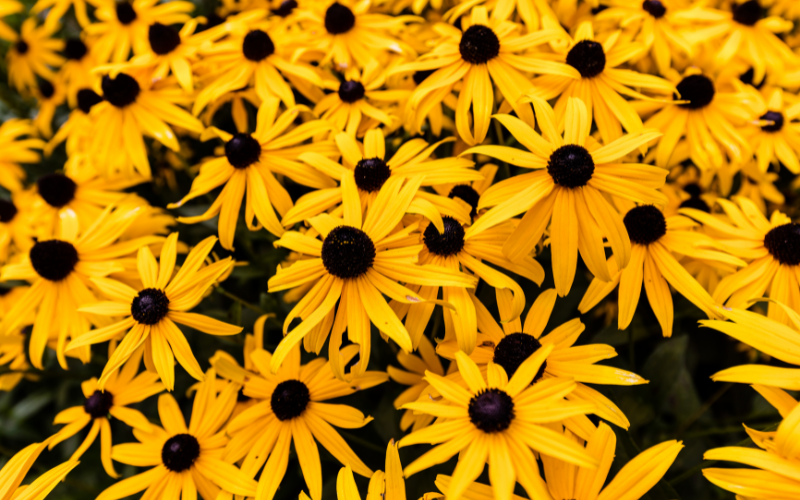
Brown-Eyed Susan is a beautiful flower. It is also known as Rudbeckia triloba. It is a native wildflower found in North America. The flowers are relatively small, with a diameter of about 1 to 1.5 inches (2.5 to 3.8 cm).
The Brown-Eyed Susan is a hardy plant that thrives in full sun and well-drained soil, making it low-maintenance and perfect for both beginner and seasoned gardeners.
| Scientific Name | Rudbeckia hirta |
| Native Range | North America |
| Flowering Season | Late Summer and Early Fall |
Bridal Wreath Spirea
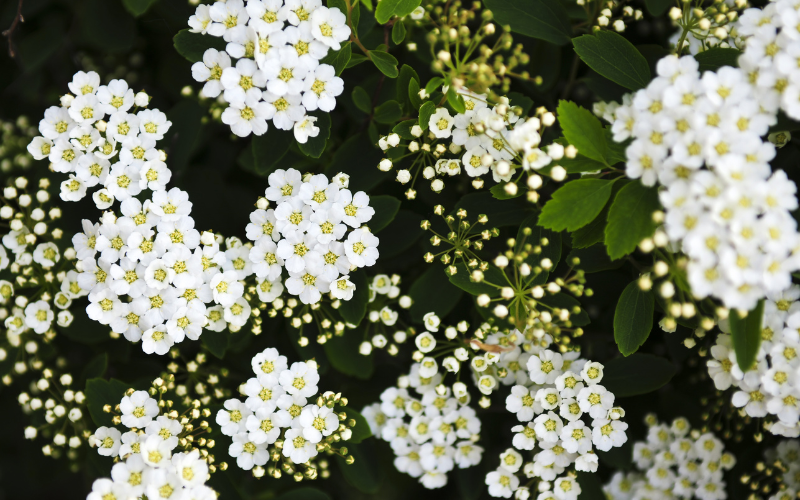
The Bridal Wreath Spirea is a stunning flower. It is scientifically known as Spiraea prunifolia. It is native to Asia. The flowers are typically pure white. The flower blooms in early spring.
It prefers full sun to partial shade and tends to produce more flowers in sunnier locations. It appreciates regular watering, especially during dry periods.
| Scientific Name | Spiraea prunifolia |
| Native Range | China, Korea, and Japan |
| Flowering Season | Spring |
Brain Cactus
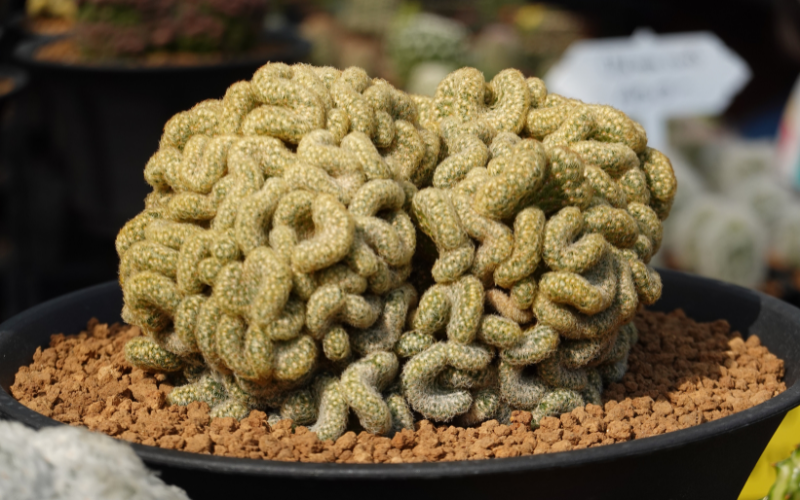
The Brain Cactus is a unique and fascinating flower. It is scientifically known as Mammillaria elongata. It is Native to Mexico. The Brain Cactus produces small, inconspicuous pink or white flowers.
Brain Cactus is relatively straightforward. It thrives in bright, indirect sunlight and well-draining soil. It prefers to dry out between waterings, making it a low-maintenance choice for plant enthusiasts.
| Scientific Name | Stenocactus multicostatus |
| Native Range | Mexico |
| Flowering Season | Spring and Summer |
Blue-Eyed Grass
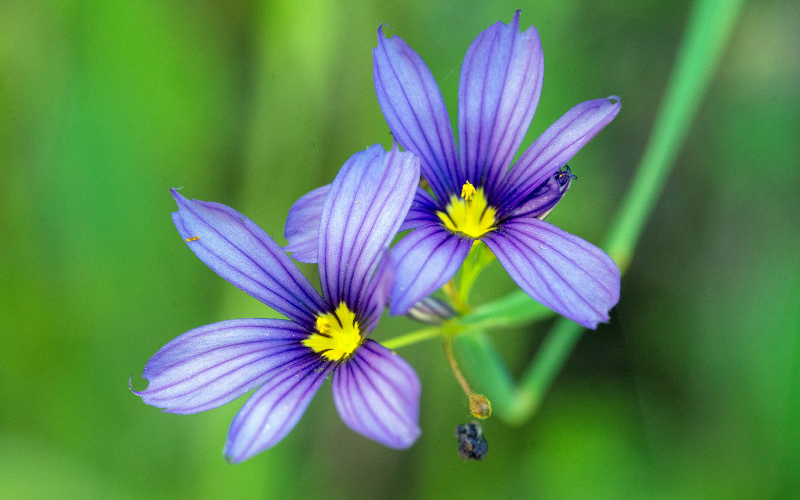
The Blue-Eyed Grass is a charming flower. It is scientifically known as Sisyrinchium. It is native to North America. Blue-eyed grass typically grows to 6 to 12 inches (15 to 30 cm).
The flowers of Blue-Eyed Grass are its main attraction. They are typically blue to violet-blue, though some varieties can produce white or yellow flowers. It prefers well-drained soils and can tolerate a range of soil types.
| Scientific Name | Sisyrinchium |
| Native Range | North or South America |
| Flowering Season | Late spring into early summer |
Blue Mist Spirea
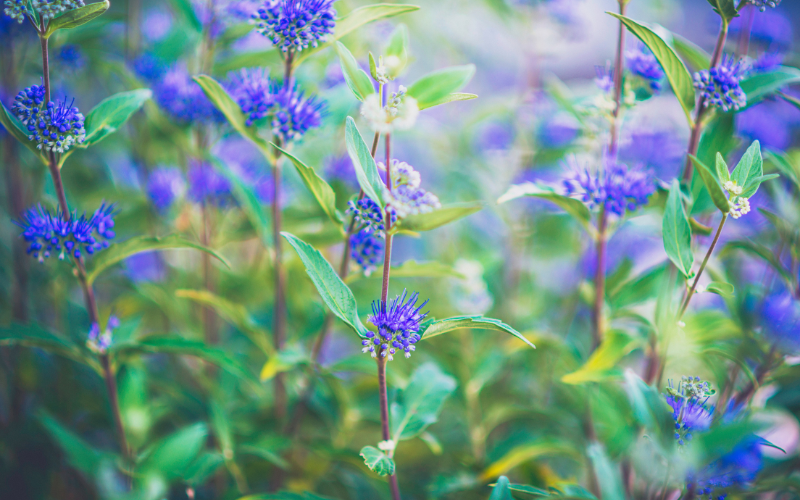
Blue Mist Spirea is a beautiful flower. It is scientifically known as Caryopteris x clandonensis. It is native to eastern and southern Asia. Blue Mist Spirea is a small to medium-sized plant, typically reaching a height of 2 to 4 feet (0.6 to 1.2 meters).
The flowers bloom in late summer to early fall. Blue Mist Spirea prefers well-drained soil and thrives in full sun to partial shade.
| Scientific Name | Caryopteris × clandonensis |
| Native Range | Asia |
| Flowering Season | Late summer to early fall |
Blue Poppy
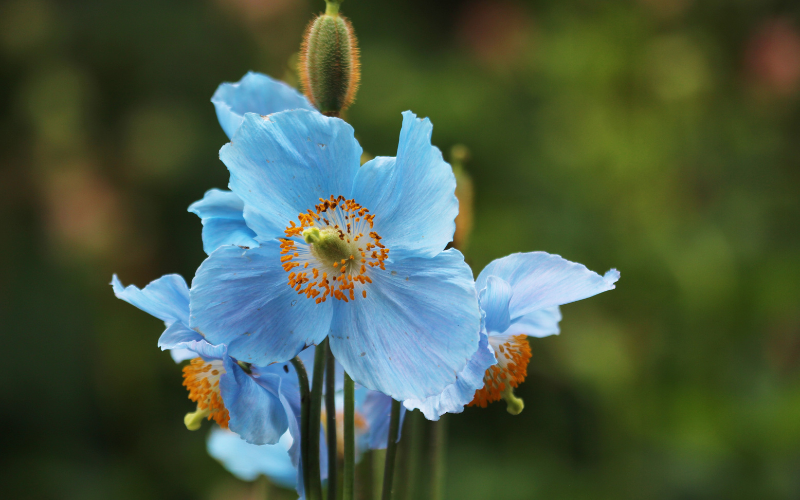
The blue poppy is a mesmerizing flower. It is scientifically known as Meconopsis. It is native to the Himalayan region. The flower typically reaches heights of 1 to 4 feet (0.3 to 1.2 meters).
These flowers can range in color from sky blue to deep purple blue. The blue poppy typically appears in late spring to early summer. They thrive in cool, moist, and well-drained soil.
| Scientific Name | Meconopsis betonicifolia |
| Native Range | China (Yunnan), Bhutan, North East India and Nepal |
| Flowering Season | Late spring to early summer |
Blue Grass
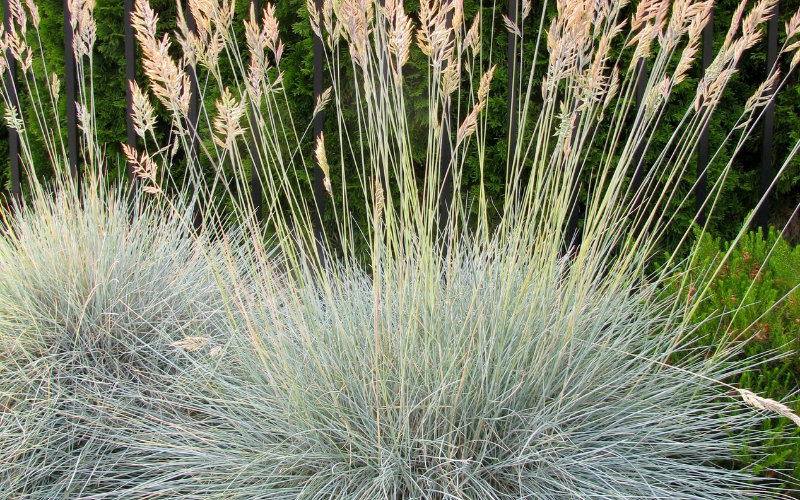
Blue Grass is a stunning flower. It is scientifically known as Poa pratensis. It is native to North America. The slender, grass-like leaves give the Blue Grass Flower a graceful and elegant look. It blooms in late spring to early summer.
The Blue Grass Flower is not only visually appealing but also relatively easy to care for, making it a popular choice. Its ability to thrive in a range of soil conditions and its resistance to pests and diseases make it a low-maintenance addition to any garden.
| Scientific Name | Poa |
| Native Range | Europe, North Asia, and the mountains of Algeria and Morocco |
| Flowering Season | Late spring, early summer |
Black Locust
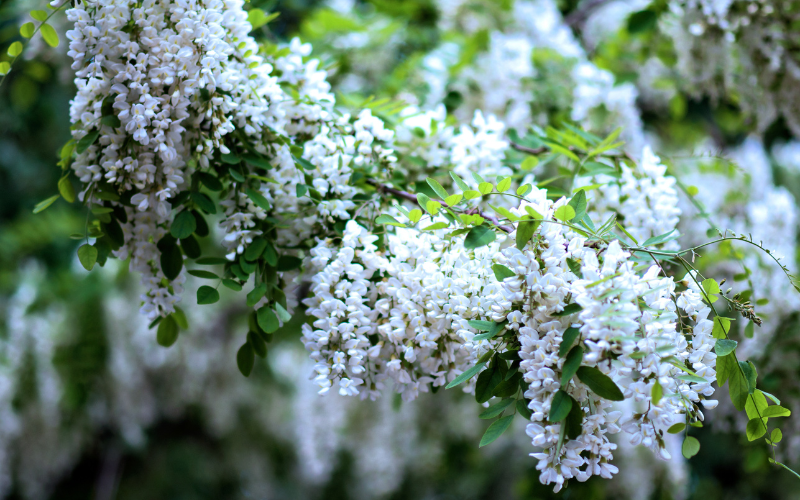
The Black Locust is a beautiful flower. It is also known as Robinia pseudoacacia. It is native to the eastern United States. Black locust trees typically bloom in late spring to early summer.
The flowers are characterized by their unique shape, resembling tiny white butterflies suspended in mid-air. They also have cultural significance. In some traditions, they symbolize love, purity, and rebirth.
| Scientific Name | Robinia pseudoacacia |
| Native Range | United States |
| Flowering Season | Late spring to early summer |
Bitter Melon Flower
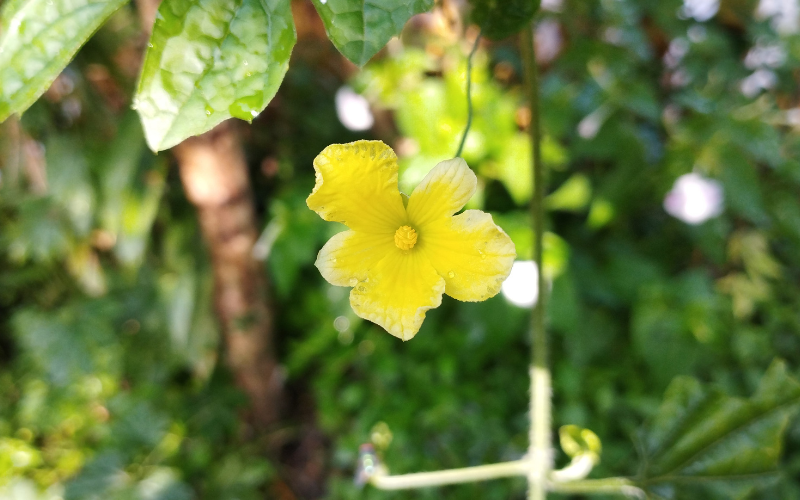
Bitter Melon is a lovely flower. It is also known as Momordica charantia. Bitter melon flowers are typically yellow to pale yellow in color. They are relatively small, about 1 to 2 inches (2.5 to 5 cm) in diameter.
The flowers bloom during the warm months of summer. Bitter melon flowers are not particularly fragrant, and their scent is generally mild or absent.
| Scientific Name | Momordica charantia |
| Native Range | Africa |
| Flowering Season | Summer |
Bellflower
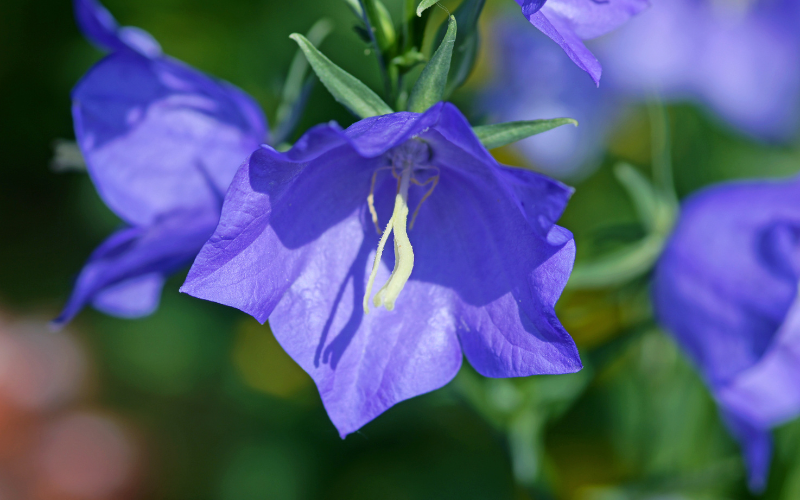
Bellflower is a stunning flower. It is also known as Campanula. It is native to Europe, Asia, and North America. The flowers can range in color from shades of blue and purple to white, pink, and even red.
Bellflowers can be found in a wide range of habitats, from meadows and woodlands to alpine slopes and rocky cliffs. Their adaptability allows them to thrive in diverse environmental conditions.
| Scientific Name | Campanula |
| Native Range | North America |
| Flowering Season | Spring and Summer |
Basketflower
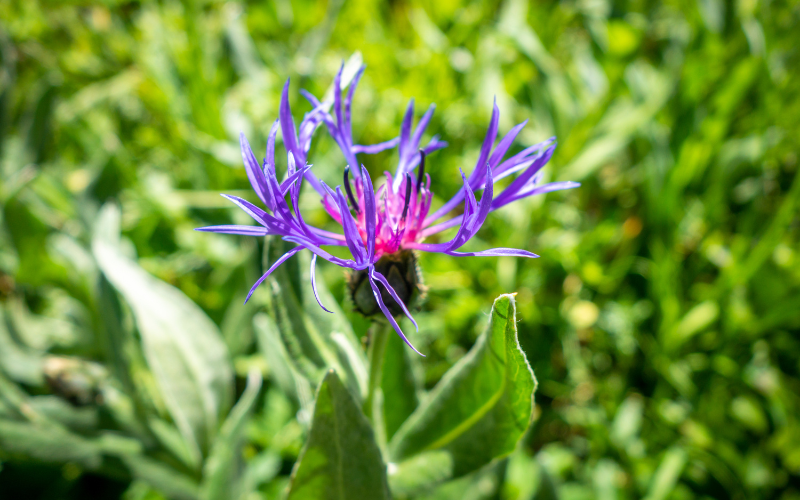
The basketflower is a beautiful flower. It is scientifically known as Centaurea americana. It is native to North America. The flowers are typically pink to lavender in color. The basketflower plants can reach a height of 3 to 5 feet (about 0.9 to 1.5 meters).
Basketflowers typically grow as biennials or short-lived perennials. They are typically found in areas with well-drained soils and plenty of sunlight.
| Scientific Name | Centaurea americana |
| Native Range | North America |
| Flowering Season | Spring, Summer |
Question & Answer
What type of flower starts with the letter B?
There are a variety of flowers that begin with the letter B. Begonias, Bluebells, Bachelor’s Buttons, Bougainvillaea, and Buttercups are some examples.
What is a purple flower that starts with B?
The Balloon Flower (Platycodon grandiflorus) is an example of a purple flower that begins with the letter B.
What are the trumpet-shaped flowers that start with B?
One example of a trumpet-shaped flower that starts with B is the Brugmansia.
What flower looks like a bell?
The flower that resembles a bell is commonly known as the Bluebell (Hyacinthoides non-scripta). Bluebells have delicate, drooping, bell-shaped flowers that hang from a slender stem.
What is the name of the Italian flower that starts with B?
One example of an Italian flower that starts with B is the Belladonna Lily (Amaryllis belladonna). It is commonly known as “Amarillis” in Italian.
